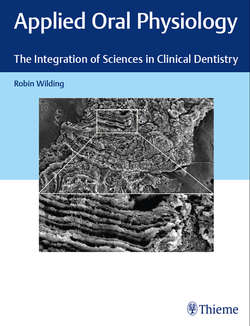Читать книгу Applied Oral Physiology - Robin Wilding - Страница 21
На сайте Литреса книга снята с продажи.
2.2.5 Secondary Dentin
ОглавлениеSecondary dentin may entirely fill the original pulp chamber in an old and worn tooth. It is a normal physiological process related to tooth wear and aging of the tooth. With age, secondary dentin reduces the diameter of the root canal, causing difficulty in performing endodontic therapy for elderly patients. When secondary dentin is gradually formed, the microscopic appearance differs little from primary dentin. The dentin tubules are less regularly arranged, but they are continuous with the primary dentin. If the progression of tooth wear or dental caries is more rapid, the secondary dentin tubules are quite irregular and not continuous with the primary tubules. So, the new dentin acts like an impermeable barrier wall. This irregular secondary dentin has been referred to as reactionary or reparative dentin. The barrier formed by reparative dentin reduces not only dentin sensitivity but also the responsiveness of the odontoblast to further irritation (▶ Fig. 2.12).
Fig. 2.11 A SEM image of dentin which has been cracked in preparation so as to reveal dentin tubules. This dentin in this image was close to the dental pulp. (Magnification × 300, window × 1,500). There are many open tubules and no peritubular dentin. This zone of the pulp–dentin would have a high fluid permeability.
